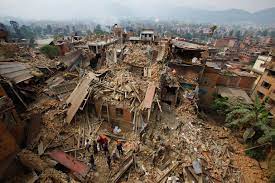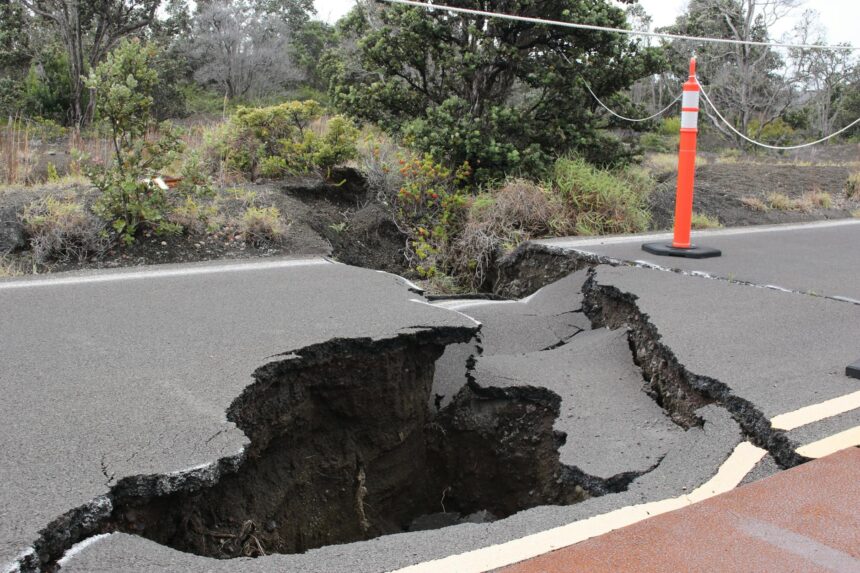Highlights:
- A 4.5 magnitude earthquake hit Chitlang in Nepal.
- No casualties or major damages reported.
- The earthquake follows a more severe quake in early November.
Earthquake in Chitlang Nepal
In the early hours of Thursday, November 23, 2023, a moderate earthquake of magnitude 4.5 struck Chitlang in the Makwanpur district of Nepal, as reported by the Nepal Seismological Centre. The tremor, recorded at approximately 1:20 AM local time, fortunately resulted in no casualties, marking a sigh of relief for the Himalayan nation still reeling from a more severe earthquake earlier in the month.

Detailed Report
The quake’s epicenter was pinpointed near Chitlang, an area in the central part of Nepal. Despite its moderate intensity, the tremor was a stark reminder of Nepal’s vulnerability to seismic activities. The country is still recovering from the impacts of a 6.4 magnitude earthquake that struck on November 3, causing significant loss of life and property.
Nepal, situated in the seismically active region of the Himalayas, has long endured the challenges posed by earthquakes. The country’s rugged terrain, coupled with its location at the intersection of two tectonic plates, makes it highly susceptible to seismic disturbances. Throughout its history, Nepal has faced numerous devastating earthquakes that have brought widespread destruction and loss of life.
The recent earthquake near Chitlang serves as a painful reminder of the persistent risk faced by the country. Even though its magnitude was considered moderate, it still managed to evoke fear and concern among the local population. The aftershocks continued to rattle the nerves of the affected communities, disrupting their daily lives and creating a climate of uncertainty.
The November 3 earthquake, just weeks before this latest tremor, inflicted significant damages to Nepal’s infrastructure, heritage sites, and homes. The aftermath of the disaster shook the nation to its core, leaving communities shattered and grieving. With the scars of that tragic event still fresh, the subsequent earthquake only adds to the ongoing challenges faced by Nepal in its recovery process.
Efforts to rebuild and strengthen Nepal’s resilience in the face of seismic events have been ongoing since that fateful day. The government, along with international organizations and communities, has been working tirelessly to provide relief, support, and assistance to those affected. Various initiatives, such as constructing earthquake-resistant buildings, improving early warning systems, and promoting disaster preparedness, have been implemented to mitigate future risks.
As the affected regions persevere in their journey towards recovery, it is crucial for both national and international stakeholders to continue supporting Nepal in its efforts. By investing in sustainable infrastructure, fostering community resilience, and enhancing disaster response capabilities, the country can better withstand future earthquakes and protect its citizens.
In the face of adversity, Nepal has demonstrated remarkable resilience and determination. The spirit of unity and solidarity that emerges in times of crisis is a testament to the strength of its people. With time and collective efforts, Nepal will overcome these challenges and rebuild itself stronger than ever before, ensuring a safer future for generations to come.
Response and Aid
In the wake of the November 3 earthquake, India has played a pivotal role in providing aid to Nepal. The Indian government swiftly dispatched an emergency aid package, including medical supplies and relief materials, to support the earthquake-affected communities. The response, coordinated by External Affairs Minister S Jaishankar, was part of India’s “Neighbourhood First Policy,” a testament to the country’s commitment to aiding its neighbors during crises.
Impact and Recovery
The recent earthquakes in Nepal highlight the ongoing challenges faced by the country in terms of disaster preparedness and response. While the latest quake fortunately did not result in any casualties, the event serves as a reminder of the need for robust emergency systems and support networks in the region.
As Nepal continues to navigate the aftermath of these natural disasters, the support from neighboring countries like India remains crucial. The resilience and solidarity shown in these times of crisis reflect the enduring spirit of the region’s communities in the face of adversity.
For more information on Nepal’s earthquake history and safety measures, visit Nepal Seismological Centre.








